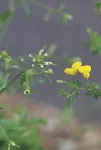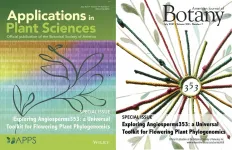(Press-News.org) A new MIT study of how a mammalian brain remembers what it sees shows that while individual images are stored in the visual cortex, the ability to recognize a sequence of sights critically depends on guidance from the hippocampus, a deeper structure strongly associated with memory but shrouded in mystery about exactly how.
By suggesting that the hippocampus isn't needed for basic storage of images so much as identifying the chronological relationship they may have, the new research published in Current Biology can bring neuroscientists closer to understanding how the brain coordinates long-term visual memory across key regions.
"This offers the opportunity to actually understand, in a very concrete way, how the hippocampus contributes to memory storage in the cortex," said senior author Mark Bear, Picower Professor of Neuroscience in The Picower Institute for Learning and Memory and MIT's Department of Brain and Cognitive Sciences.
Essentially, the hippocampus acts to influence how images are stored in the cortex if they have a sequential relationship, said lead author Peter Finnie, a former postdoc in Bear's lab.
"The exciting part of this is that the visual cortex seems to be involved in encoding both very simple visual stimuli and also temporal sequences of them, and yet the hippocampus is selectively involved in how that sequence is stored," Finnie said.
To have hippocampus and have not
To make their findings, the researchers including former postdoc Rob Komorowski trained mice with two forms of visual recognition memory discovered in Bear's lab. The first form of memory, called stimulus selective response plasticity (SRP) involves learning to recognize a non-rewarding, non-threatening single visual stimulus after it has been presented over and over. As learning occurs, visual cortex neurons produce an increasingly strong electrical response and the mouse ceases paying attention to the once novel, but now decidedly uninteresting, image. The second form of memory, visual sequence plasticity, involves learning to recognize and predict a sequence of images. Here, too, the once novel but now familiar and innocuous sequence comes to evoke an elevated electrical response, and it is much greater than what is observed if the same stimuli are presented in reverse order or at a different speed.
In prior studies Bear's lab has shown that the images in each form of memory are stored in the visual cortex, and are even specific to which eye beheld them if only one did.
But the researchers were curious about whether and how the hippocampus might contribute to these forms of memory and cortical plasticity. After all, like some other forms of memory that depend on the hippocampus, SRP only takes hold after a period of "consolidation," for instance overnight during sleep. To test whether there is a role for hippocampus, they chemically removed large portions of the structure in a group of mice and looked for differences between groups in the tell-tale electrical response each kind of recognition memory should evoke.
Mice with or without a hippocampus performed equally well in learning SRP (not only measured electrophysiologically but also behaviorally), suggesting that the hippocampus was not needed for that form of memory. It appears to arise, and even consolidate, entirely within the visual cortex.
Visual sequence plasticity, however, did not occur without an intact hippocampus, the researchers found. Mice without the structure showed no elevated electrical response to the sequences when tested, no ability to recognize them in reverse or when delayed and no inclination to "fill in the blank" when one was missing. It was as if the visual sequence --and even each image in the sequence--was not familiar.
"Together these findings are consistent with a specific role for the hippocampus in predictive response generation during exposure to familiar temporal patterns of visual stimulation," the authors wrote.
New finding from a classic approach
The experiments follow in a long tradition of attempting to understand the hippocampus by assessing what happens when it's damaged. For decades, neuroscientists at MIT and elsewhere were able to learn from a man known as "H.M.," who had undergone hippocampal removal to relieve epileptic seizures. His memory of his past before the surgery remained intact but he exhibited an inability to form "declarative" memories of new experiences such as meeting someone, or performing an activity. Over time, however, scientists realized that he could be trained to learn motor tasks better, even though he wouldn't remember the training itself. The experiments helped to reveal that for many different forms of memory there is a "division of labor" among regions of the brain that may or may not include the hippocampus.
The new study, Bear and Finnie said, produces a clear distinction through the division of labor in visual memory between simple recognition of images and the more complex task of recognizing of sequence structure.
"It's a nice dividing line," Bear said. "It's the same region of the brain, the same method of an animal looking at images on a screen. All we are changing is the temporal structure of the stimulus."
Alzheimer's assessment?
Previous research in the lab showed that SRP and visual sequence plasticity arise via different molecular mechanisms. SRP can be disrupted by blocking receptors for the neurotransmitter glutamate on involved neurons while sequence plasticity depends on receptors for acetylcholine.
The next question Bear wants to address, therefore, is whether an acetylcholine producing circuit links the hippocampus to the visual cortex to accomplish sequence learning. Neurons that release acetylcholine in the cortex happen to be among the earliest disrupted in Alzheimer's disease.
If the circuit for sequence learning indeed runs through those neurons, Bear speculated, then assessing people for differences in SRP and sequence learning could become a way to diagnose early onset of dementia progression.
INFORMATION:
The National Eye Institute of the National Institutes of Health and the JPB Foundation funded the research.
What The Study Did: Researchers examined the safety of the second dose of the Pfizer-BioNTech or Moderna COVID-19 vaccines in patients who experienced an allergic reaction to the first dose.
Authors: Kimberly G. Blumenthal, M.D., M.Sc., of Massachusetts General Hospital in Boston, is the corresponding author.
To access the embargoed study: Visit our For The Media website at this link https://media.jamanetwork.com/
(doi:10.1001/jamainternmed.2021.3779)
Editor's Note: The article includes conflicts of interest and funding and support disclosures. ...
What The Study Did: The association between Medicare eligibility at age 65 and changes in racial and ethnic disparities in access to care and self-reported health was evaluated in this study.
Authors: Jacob Wallace, Ph.D., of the Yale School of Public Health in New Haven, Connecticut, is the corresponding author.
To access the embargoed study: Visit our For The Media website at this link https://media.jamanetwork.com/
(doi:10.1001/jamainternmed.2021.3922)
Editor's Note: The article includes conflicts of interest and funding and support disclosures. Please see the article for additional information, including other authors, author contributions and affiliations, conflict of interest and financial disclosures, and funding and support.
INFORMATION:
Media advisory: The full study and ...
What The Study Did: Survey data were used to investigate the relationship between loneliness and high-risk medication use in adults older than age 65.
Authors: Ashwin A. Kotwal, M.D., M.S., of the University of California, San Francisco School of Medicine, is the corresponding author.
To access the embargoed study: Visit our For The Media website at this link https://media.jamanetwork.com/
(doi:10.1001/jamainternmed.2021.3775)
Editor's Note: The article includes conflicts of interest and funding and support disclosures. Please see the article for additional information, including other authors, author contributions ...
Lonely, older adults are nearly twice as likely to use opioids to ease pain and two-and-a-half times more likely to use sedatives and anti-anxiety medications, putting themselves at risk for drug dependency, impaired attention, falls and other accidents, and further cognitive impairment, according to a study by researchers at UC San Francisco.
The study found that just over half of 6,000 respondents in a nationally representative survey of seniors living independently were not lonely, while 40 percent were moderately lonely, and 7 percent were highly lonely.
The proportion of seniors ...
Researchers from the Institute of Process Engineering (IPE) of the Chinese Academy of Sciences, Beijing Chaoyang Hospital and the University of Queensland have developed a new formulation based on regulatory T-cell exosomes (rEXS) to deliver vascular endothelial growth factor (VEGF) antibodies for choroidal neovascularization therapy.
The study was published in Nature Biomedical Engineering on July 26.
Ocular neovascularization is often associated with age-related macular degeneration, diabetic retinopathy and other ocular diseases, which can cause severe vision loss.
The present treatment for ocular neovascular disease in clinic is intravitreal injection of VEGF antibodies (aV) to block the activity of VEGF ...
BOSTON - In a multi-hospital analysis of individuals who experienced an allergic reaction to their first mRNA COVID-19 vaccine dose, all patients who went on to receive a second dose tolerated it without complications. The research, which was led by allergists at Massachusetts General Hospital (MGH) and is published in JAMA Internal Medicine, indicates that a first dose reaction to COVID-19 vaccination should not keep people from getting a second dose.
Allergic reactions after mRNA COVID-19 vaccinations have been reported to be as high as 2%, with anaphylaxis--a life-threatening whole-body allergic reaction--occurring in up to 2.5 per 10,000 people. ...
Plants, including crops such as rice and wheat, obtain their essential mineral nutrients and water through their roots, making them an important interface between plants and the soil environment. The roots of land plants associate with a wide range of microbes - including bacteria - that are recruited from the surrounding soil and assemble into structured communities known as the root microbiota. These microbial communities are sustained by the plant host, which provides them with nutrients, primarily in the form of organic carbon compounds secreted by the root. In turn, these commensal bacteria mediate multiple processes ...
New York, NY (July 26, 2021) - Researchers have identified a rare class of genetic differences transmitted from parents without autism to their affected children with autism and determined that they are most prominent in "multiplex" families with more than one family member on the spectrum. These findings are reported in Recent ultra-rare inherited variants implicate new autism candidate risk genes, END ...
Bethesda, MD (July 26, 2021) -- There is an urgent need to develop and implement effective screening, diagnosis and treatment strategies for patients with nonalcoholic fatty liver disease (NAFLD) and nonalcoholic steatohepatitis (NASH), common liver conditions with a rising burden in the U.S. and globally. This is particularly important for the most at-risk patients, those with diabetes and obesity.
As a critical first step, the American Gastroenterological Association (AGA) -- in collaboration with seven professional associations -- convened an international conference of 32 experts to develop a multidisciplinary action plan to improve care for the growing population of patients with NAFLD ...
How do you study a group of organisms with over 300,000 species, dispersed across all seven continents, and with up to 50 times as much DNA content as the human genome?
This is the question posed to biologists studying the evolutionary history of flowering plants, called angiosperms, whose rapid diversification was so convoluted a problem that Darwin referred to it as the 'abominable mystery.'
This month, both the American Journal of Botany (AJB) and Applications in Plant Sciences (APPS) are devoting their July issues to what has recently become a turning point in the way scientists study the relationships among flowering plants. Dubbed Angiosperms353, the initiative combines ...



